Perfect Blue: A Genre Study
Satoshi Kon is one of the most recognizable names when it comes to anime filmmaking, second only to Hayao Miyazaki. Kon’s oeuvre is the darker, grittier, “adult” counterpart to Miyazaki’s undeniably charming and more universal appeal. Entering the world of Kon is delving into a kaleidoscopic funhouse of cyber-dreamscapes (Paprika), magical realism (Millennium Actress), and the throes of poverty in modern Japan (Tokyo Godfathers). A versatile artist, Kon deals with distinct subject-matters through a variety of genres. This “genre blending” is common in Kon’s films, making them a great source for genre-studying. Perfect Blue (1997) is one such example, where Kon’s rich use of genre hybridity weaves a modern tale about the psychological horror wrought by the virtual self.
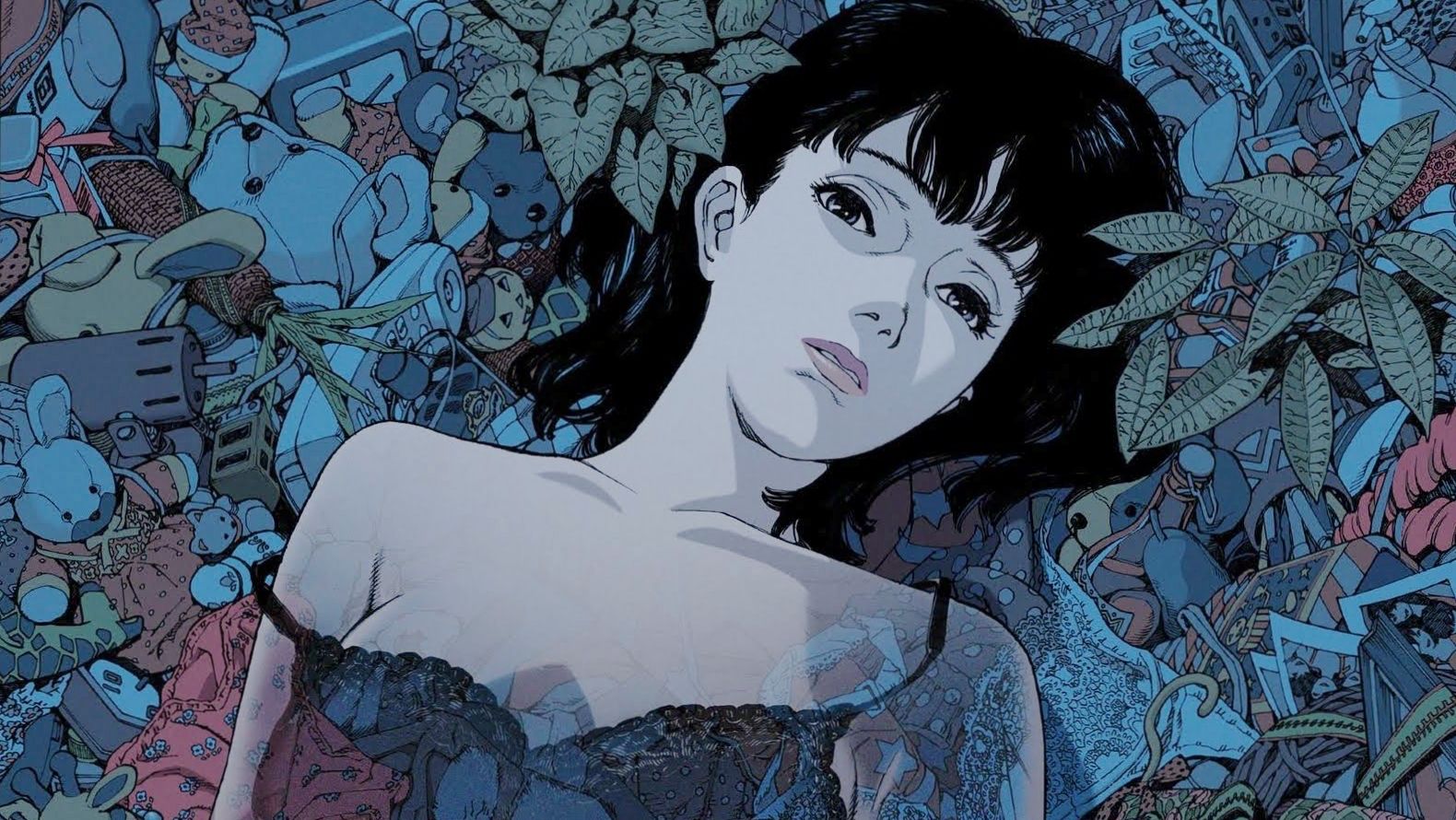
A Classic Psychological Thriller
A young pop idol named Mima outrages her fans when she crosses over to “serious acting.” This metamorphosis entails an exploitation of her body that does not go over well with her most—disturbingly—loyal fans. Perfect Blue initially presents itself as a psychological thriller, a genre appropriate to the dark theme with which it is principally concerned: the fragmentation of identity in a modern, media-saturated world.
In Perfect Blue, the “thrill” takes the form of Mima-Mania, the protagonist’s obsessed fan to whom we’re introduced in the film’s opening chapter. A concert-venue crew member with a grotesque face (drawn this way to emphasize his monstrosity) stares at Mima with raptured craving during one of her musical performances. It becomes clear to the viewer the only reason this man took this job was to seize the opportunity for physical proximity to a celebrity he worships with unhealthy zeal. Throughout the rest of the film, this proximity will encroach on Mima as Mima-Mania sets out to “rectify” her career move, thereby “killing” (in Mima-Mania’s eyes) her former persona.
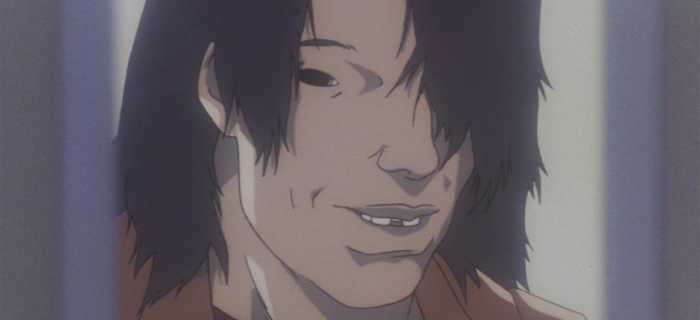
Following her final performance with her J-pop idol group CHAM!, Mima returns to her (surprisingly) modest apartment where she receives an ominous letter via fax: “I always like looking into Mima’s room.” This is followed by the now-hackneyed scene of an anonymous phone caller heavy-breathing into the speaker without uttering a single word. In this way, Kon establishes the film’s source of haunting eeriness, one in which the viewer, through the subjective perspective of Mima, shares the victim’s experience. A perpetual threat is felt in every corner of the urban night, cast by the fluorescent lights which take on a nightmarish form as they provide a false sense of security from inescapable doom (as well as exemplifying the film’s “threat of technology” theme, later discussed).
A psychological thriller, as the name suggests, stresses the psychological dimensions of the film. This is done through the exploration of the unstable mental states of its characters, rather than focusing on the process of “catching the bad guy,” which has historically belonged to the narrative of the crime genre. Following in the footsteps of Hitchcock’s famous precedent Vertigo (1958), Perfect Blue depicts an expression of mental deterioration wherein an ordinary individual, following a traumatic inciting incident, begins to lose their grip on the socially-accepted habitudes of life. In Vertigo, this is Madeleine Elster’s pseudo-death from the top of the church bell-tower, prompting a conventionally hardworking detective committed to get the job done to descend into a state of misogynistic, psychological manipulation. Similarly, Perfect Blue begins with a woman who, entering adulthood, is looking to switch gears in her career so as to mature as an artist before getting boxed into her pop-idol image.
A Touch of Teen Horror
This is the familiar venture of many a modern celebrity (think teen stars like Amanda Bynes, Hannah Montana and Lindsey Lohan) who seem to morph into degenerate versions of their “once innocent” selves. In Mima’s case, following the traumatic experience of being filmed in a rape scene, her degenerate form takes the shape of a literal “phantom” persona which undermines Mima’s ability to discern what is real and what isn’t. In both films, the initial use of a crime genre framework is clear, but these function to quickly set up as core conflict the psychological phenomenon with which these films are mainly concerned: exploring the protagonist’s fragmented identity.
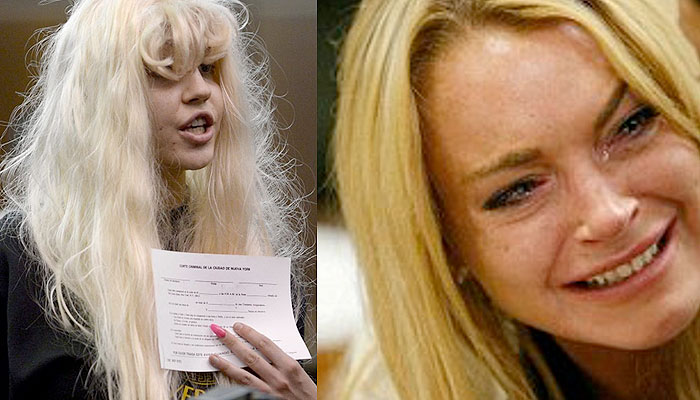
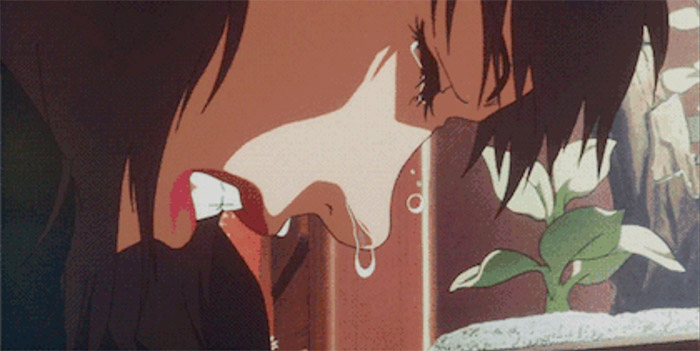
Mima possesses an adolescent-like naïveté that makes her the perfect subject through whom to explore this phenomenon. From the outset, we see her dressed up in her pink-and-white tutu, evoking grace and innocence, in the middle of a multicolored J-pop trio performing an upbeat song beneath dazzling stage lights. When she returns home and first reads her stalker’s “fan-fiction” diary blog, called “Mima’s Room,” rather than exhibiting the automatic apprehension the viewer expects, she says, in a mildly amused tone, “Somebody sure knows me.” Later on, Mima reveals to her managing assistant, Rumi, that she doesn’t know how to use a computer. This detail will in particular amuse native Japanese speakers who will have recognized Mima’s country accent, thereby combining the “naïve, female protagonist in peril” trope with that of the “starry-eyed country girl embarks on a journey to take on city life” scenario which is so common to Mima’s character-type. Mima’s arc, then, is a journey of self-discovery in the face of the external forces which threaten to undermine her search for identity.
In light of these observations, Mima’s storyline is reminiscent of both “coming of age” teen dramas as well as teen horrors. As Linda Williams explains in Film Bodies: Gender, Genre, and Excess:
“…recent teen horror corresponds to a temporal structure which raises the anxiety of not being ready, the problem, in effect, of ‘too early!’ Some of the most violent and terrifying moments of the horror film genre occur in moments when the female victim meets the psycho-killer-monster unexpectedly, before she is ready”
Williams, Linda. “Film Bodies: Gender, Genre, and Excess.” Film Quarterly 44 (1991): 2-13.
The “too early” temporality is characteristic of teen dramas, where teenagers have not yet established a stable “adult” identity. Teen years are characterized by a phase of transition, both bodily and psychological. This process is usually complicated through the external forces by which the individual is pressured to adopt an identity they might not be willing to accept and, as such, often find themselves trapped between resistance and an inability to transcend these norms.

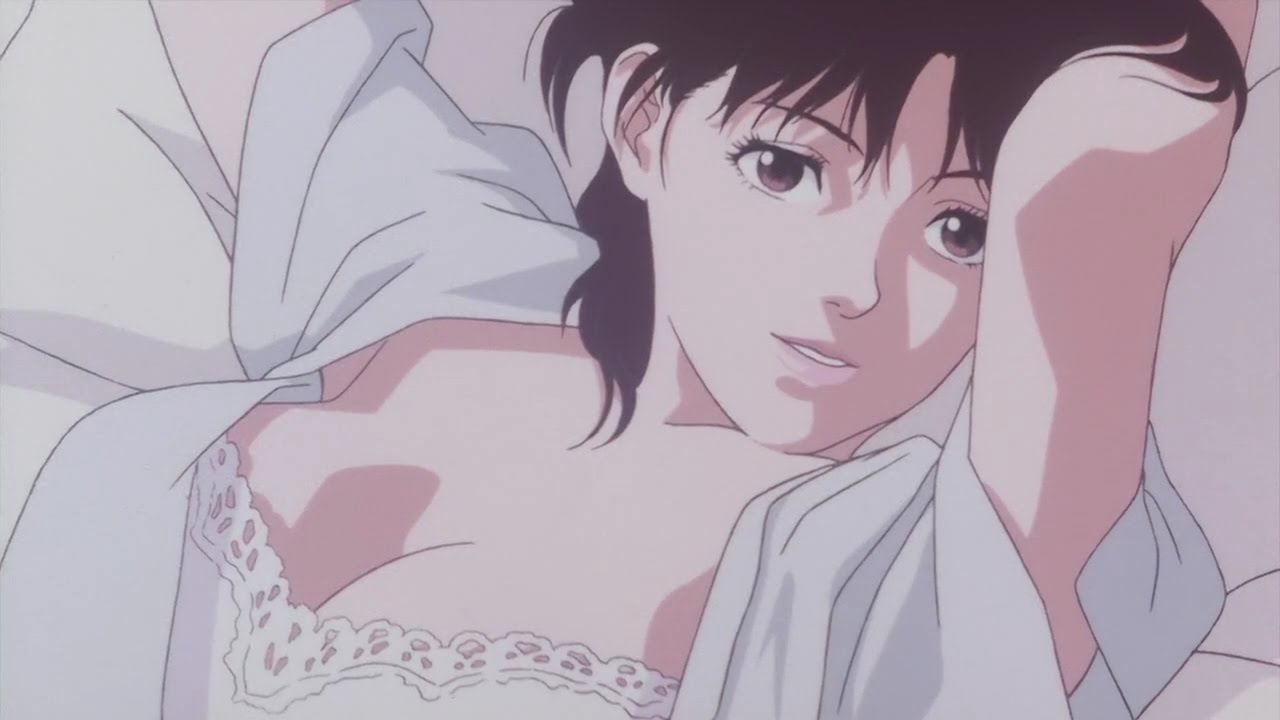
In Perfect Blue, these pressures are accepted as a necessary evil. Following the shoot of the rape scene, Mima responds to an interview question: “Of course I would be lying if I said I didn’t have any hesitations, but I looked at it as a hurdle I had to jump over as an actress.” However, following the episode of the shoot, Mima breaks into tears in the solitude of her room and insists that “Of course I didn’t want to do it! But I couldn’t trouble all the people who brought me this far!” Although Mima envisions herself embodying a more mature identity, this can only be achieved after having overcome a series of necessary evils. In the teen drama, these are obstacles like: social ostracism, the disillusionment of romance, mindless jobs, and the bureaucracy of higher education. The naïve teenager, then, like Mima, can enter into a new phase of maturity only through disillusion, that is, only once they have been thrust into and overcome a ritual of undesirable hurdles.
Genre-blending to Paint a Modern Allegory in the Age of the Virtual Self
The “horror” elements of Perfect Blue, parceled with its psychological dimensions, tamper with what would have otherwise been the too-early temporality characteristic of the classic “coming of age” teen drama. Just as the film has established itself as a psychological thriller, Kon ceases to follow the activities of Mima-Mania, who we were led to believe would be the film’s main antagonist. This is very much not the case, for soon the film has taken a darker turn: overridden by an acute mixture of fear and guilt for the shameful process of exploitation she has condoned, Mima develops multiple personality syndrome.
The growing severity of this condition quickly becomes the film’s new primary focus. Mima’s spiraling mental state manifests through the “phantom” Mima who bears the characteristics of a ghost, gliding through buildings and hopping on lampposts as a shiny, transparent entity seen only by Mima, the creator of this phantom. Of course, it is inaccurate to attribute “phantom Mima” ’s creation as solely Mima’s: as we find out at the end of the film, it was Rumi, her middle-aged manager and former CHAM! member, who was behind Mima-Mania and, by extent, Mima’s mental deterioration.
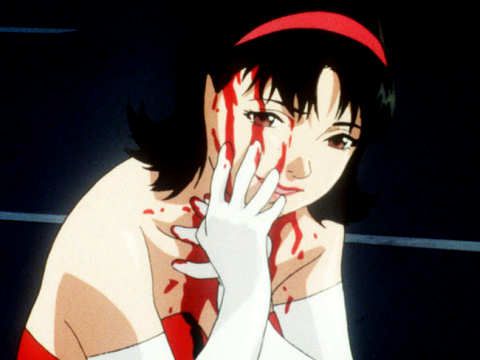
Mima’s meek naivete means it is only a matter of time before her virtual identity, phantom Mima, has taken over, blurring the line between what is real and what isn’t. The viewer experiences these disorienting suspensions of atemporality when the logical link between events becomes muddled. One such moment occurs when Eri, a female character from Double Bind, is explaining that Mima as a pop-idol-turned-actress is only a fictional, self-constructed identity that Mima created as part of the trauma of having been raped. This temporarily leads the viewer to suspect that this, Double Bind, was in fact the reality of the film the entire time—before it is made clear, once we see the studio set, that we were living in a fictional world-within-the-world. This atemporality is characteristic of phantom Mima; after all, what kind of temporality is “virtual temporality”?
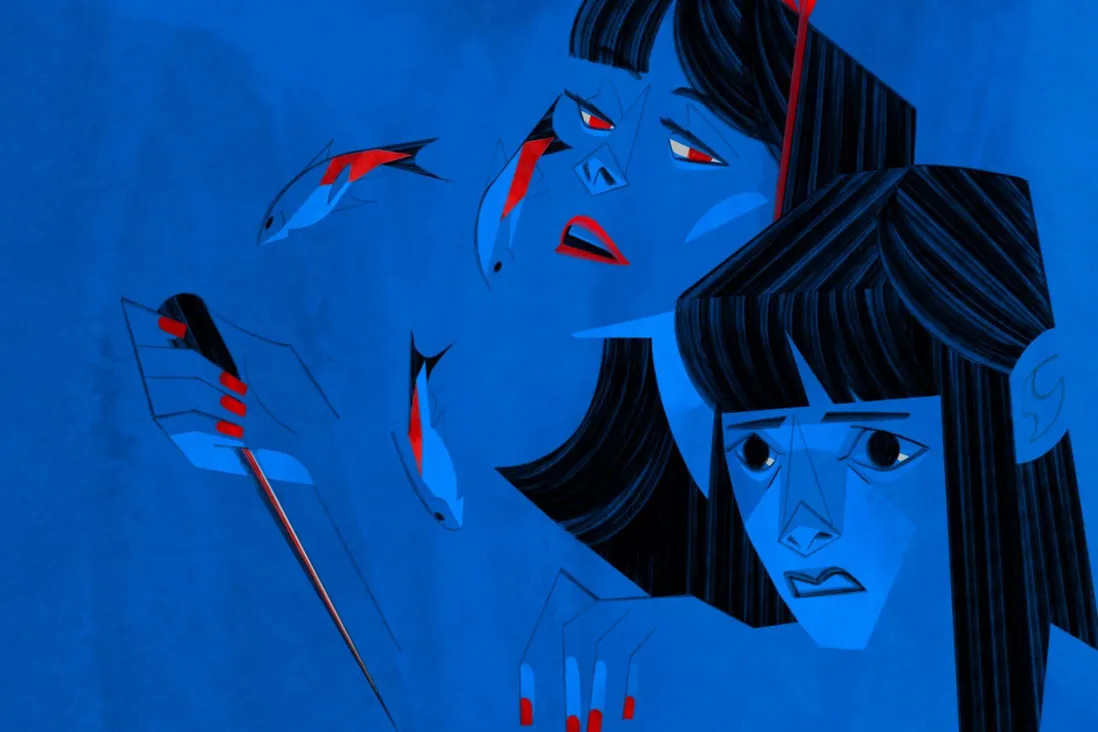
By associating this virtual atemporality with severe moments of violence, Perfect Blue combines the psychological thriller and horror genres to remind us of the dangers of letting our virtual identities take control. Sure, it’s easy to “freeze” the best moments in our lives and create the semblance of an envy-inducing, exhilarating life. In a media-saturated world, it’s even possible to transform oneself into a pseudo-celebrity or an “online personality.” But, lest upholding this image should become our life project, it is important to keep a healthy distance away from these superfluous pleasures. Our participation with this atemporality becomes, as with Mima’s case, an obsession when it leads to self-absorption, when we have begun to lose focus in fulfilling an authentic life. Mima’s case reminds those of us who frequent atemporality (i.e. social networking sites, any site with an “Avatar,” etc.) that we are only ever one more “Like” or “Thumbs up” away from becoming our own Rumi, our own Mima-mania—that is, our own downfall to the modern horror-thriller of our lives.
What do you think? Leave a comment.









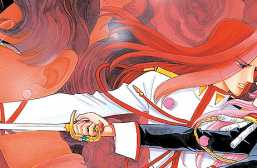

I watched Perfect Blue and I have to say it was probably one of the most tense and involving psychological thrillers I’ve ever seen. Looking forward to Paprika…
I watched all of his movies, and being an anime fan, I can honestly say he was one of the greatest anime film makers of all time and he deserves more credit than he got.
I don’t really follow much Japanese animation outside of whatever Studio Ghibli is up to – but Satoshi Kon really stood out to me as an incredible talent and superb filmmaker. Millennium Actress is quite simply one of the best films I have ever seen – animated or live action. It’s just deliriously imaginative, well constructed and very moving. A masterpiece. His other films haven’t impressed me quite as much, but they’re never less than a fascinating watch and I hugely admire their ambition nonetheless.
Perfect Blue is one plot point away from being something truly amazing. The rape scene leading to a legitimate psychotic break is way too far-fetched to be believable. Yes, she may have not wanted to do it- but the notion that because of her acting in a troubling scene causes her to have massive lapses in time due to trauma is not a reasonable result from that action. What was a slow degradation of her sanity is tainted with an unnecessary jump forward from a scene that she, a smart and charismatic human being, would be able to logically compartmentalize and deal with. Everything else in the movie is fantastic and builds their idea, but this single plot point detracts from everything and sends Perfect Blue into sensationalized territory. Which is definitely due to Japan’s ultra-conservative ideology and rampant sexism.
Where as a complete novice is the best place to start with Anime?
Start with other Satoshi Kon films.
What sort of thing are you generally interested in? Grave of the Fireflies is probably the Anime with the greatest artistic merit, but it is an absolutely harrowing watch. There are many different genres of Anime, it’s a bit like asking “What film should I watch?”
Obviously it depends on your own sensibilities but Perfect Blue isn’t a bad place to start as it is a fairly short film and very ‘adult’ in its subject matter. However although for general ease of accessibility the entire back catalogue of Miyazaki is essential to every cinema lover, then move on to Takahata and all other Satoshi Kon works. More recent popular filmmakers include Mamoru Hosoda and Makoto Shinkai whose work is also recommended. I have to admit I’m not too well educated in anime and often find films (often not released in the UK) by directors I’ve never heard of which turn out to be absolute gems. It’s a great rabbit hole to go down when you start.
Paprika, Grave of the Fireflies.
anything by Studio Ghibli would be a good place, thus encouraged you will spread your wings into other areas with a darker more dystopian view. Don’t start with Grave of The Fireflies, you’ll be in tears and likely never come back.
Akira and Nausicaä of the Valley of the Wind as well as much of the Studio Ghibli output and as mentioned Satoshi Kon.
There are countless TV shows but the only one to hold my interest was Death Note.
Ghost in the Shell
Akira
Cowboy Bebop
Death Note
Tokyo Godfathers.
Wolf children or Totoro. Patema Inverted is good too.
Satoshi Kon was a genius who sadly was taken from us too soon. I have never seen any vivid imagery in other animes or films aside from his
I’ve still yet to see Millennium Actress and Paprika. Perfect Blue was okay, Tokyo Godfathers was very good. Paranoia Agent, that was just weird, but strangely satisfying.
Perfect Blue is a film I’ve been interested in seeing for a while now but for some reason I’ve just never got round to. I believe you have converted me.
It feels like the writer was telling me that mima knew a lot of what was actually happening and may even have a part to play in this whole mess. It almost feels like she wanted her agent to be in the mental ward or was at least happy she was there.
This anime is so excellent, it’s been one of my all time favorites for so long! (I LOVE Paprika too!) It always feels like Perfect Blue is making you wait for the shoe to drop and everything to make sense but you really don’t get that satisfaction until the end. Even then you’re like …. WHAT??? You helped me clear up some confusion on my end.
Perfect Blue was the reason why I took importance of my anime taste, it’s just phenomenal and amazing movie weave with top class cinematography.
The book was ground breaking because pop idols get badly stalked in Japan and the book this movie was based on was the first to bring attention to it and it’s even darker than the movie. Guys. There’s a death by industrial fan.
This movie totally blew me away when i first saw it. Back then i thought all non-kid-firendly anime were like this. Sadly that’s not the case….
Satoshi Kon was one of the world’s greatest film directors – up there with the greats of cinema, not merely anime. He really should be as well known and as well loved as Hayao Miyazaki.
I loved this movie. want to eventually sit and watch all the Satoshi Kon movies. Maybe not all at once….I might lose my mind, in the best way possible.
The value of this story is still relevant today. It’s about self-identity, freedom, the capitalist industry of entertainment, and of course the fake life of people in social media.
Makes you wonder what else Kon-san would have blessed us with if he hadn’t left us way too soon.
Showed just how far anime can push the boundaries. We always think of animated stuff as not being serious and yet this movie demands to be taken seriously and it was. It was brilliant.
I honestly figured rumi was the ultimate bad guy based of her design when I first saw the movie. Her character much like the stalker is different from everyone else’s and thus stand out as villainous to me.
This film captures the inner turmoil and insanity surrounding young women’s early sexual experiences more poignantly than any other piece of media I have ever encountered.
There does seem to be an allegorical aspect to the protagonist, particularly in her filming work within.
One of my faves – I owed the VHS when it came out, then DVD, now BR. I’ve read both novels, and I even bought the storyboard/artbook collection just so I could get a high quality scan of the “puzzle” image so I could make a real 700+ piece puzzle out of it.
I love anime but for the most part I really can’t stand most of japanese pop music, the song the girls perform in the farewell concert is essentially the only idolish song I’m willing to stand, and maybe the chinese ending of Mamoru Oshii Ghost In The Shell.
I feel that anime in the 80’s and early 90’s were more adult storylines. I still love anime but its harder to find content that is not marketing to teenagers.
Less feature lenght movies or just that we still have to wait next decade for their impact to settle in, but still many adult themed anime series: Ergo Proxy (they did Genocidal Organ (2017)), Parasyte, Psycho Pass, Monster…
The other thing is, in the 90s there was a lot of anticipation, because the future looked promising and interesting and society changed fast, so they did a lot of Black Mirror style of reflection at the time (their worst fears became our everyday routine kind of work, and good work it was!).
Nowadays, it’s a lot more of introspection, reflection on past mistakes and finding a way to correct course, the next generation feels like they have no future of their own, just the consequences of their predecessor’s bad choices to deal with and you can feel it on today’s productions.
What about Devilman Crybaby?
Perfect Blue is such a great movie and gets better with rewatches! Satoshi Kon was so great addressing themes of identity, stress, depression, growth, and so many other psychological issues! Thank you for highlighting this movie and helping keep it alive in old and new anime fans!
One of the best anime movies from my formative teen years in the 90s. Definitely appropriate for Halloween too as this could be labeled in the horror genre. Not monsters and blood horror, but psychological horror and very well done at that.
Watched Perfect Blue at the beginning of lockdown, I’m insanely glad that I did. Absolutely fantastic movie
I think the last time I watched this movie was almost a decade ago, I should probably rewatch it at some point, I do remember it being great.
It’s ahead of its time and understands the Idol system of japanese life very well.
This movie didn’t make me question myself, but it made me question the Satoshi Kon.
Kon was so ahead of his time. Seeing paranoia agent on tv growing up inspired me to become a video editor.
Great article! Kudos.
It’s amazing how much more the message of this film rings true in the age of social media.
One of the best anime movies I’ll ever watched.
I remember watching this movie as a child and feeling so unnerved and disturbed by it. It definitely left an impression on me! Like all good and worthwhile films do.
will be rewatching this several times to see new things
I’ve heard a lot about this anime, but this article made me want to check on out more!
This was the second film I watched by Satoshi Kon after Paranoia Agent. Both left a good impression in me. Although it was a bit confusing in some parts, it was worth watching it.
This is an insightful and well put together article! I enjoyed watching Perfect Blue, and I was curious about what made it work, and I feel like I have a better understanding of that now, thanks to you!
Perfect Blue remains one of my all-time favourite horrors. I love how eerily it’s managed to comment on parasocial relationships at the beginning of when these issues began to arise. It’s great to see more commentary on its teen horror elements.
I really liked that this article touched on the parallels to Vertigo, described the connection this film has to the chaos of adolescence, and really highlighted how dangerous an online persona can become when it grows out of control from the one that created it.
Perfect blue is really a great film. The various twists really do make the film. Great write up.
I own this movie, but never found time to sit down and watch it.